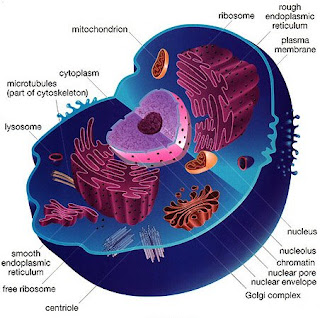History of CELL: Science part one
 These complex questions can be answered with one very short word, cells! The human body is made up of approximately 100 trillion (100, 000, 000, 000, 000) cells!
These complex questions can be answered with one very short word, cells! The human body is made up of approximately 100 trillion (100, 000, 000, 000, 000) cells!Keep in mind, this figure is just an estimate. At this time, there really is no way to know the exact number of cells in a human body. Can you imagine trying to count them all? Plus, the number will vary from person to person, depending on their size.
The number of cells in your own body is constantly changing, as cells die or are destroyed and new ones are formed. Think about when you scrape your knee. Cells are lost and then reproduced during the healing process.
The cell is the functional basic unit of life. It was discovered by Robert Hooke and is the functional unit of all known living organisms. It is the smallest unit of life that is classified as a living thing, and is often called the building block of life.Some organisms,
 such as most bacteria, are unicellular (consist of a single cell). Other organisms, such as humans, are multicellular. Humans have about 100 trillion or 1014 cells; a typical cell size is 10 µm and a typical cell mass is 1 nanogram. The largest cells are about 135 µm in the anterior horn in the spinal cord while granule cells in the cerebellum, the smallest, can be some 4 µm and the longest cell can reach from the toe to the lower brain stem (Pseudounipolar cells).The largest known cells are unfertilised ostrich egg cells which weigh 3.3 pounds.
such as most bacteria, are unicellular (consist of a single cell). Other organisms, such as humans, are multicellular. Humans have about 100 trillion or 1014 cells; a typical cell size is 10 µm and a typical cell mass is 1 nanogram. The largest cells are about 135 µm in the anterior horn in the spinal cord while granule cells in the cerebellum, the smallest, can be some 4 µm and the longest cell can reach from the toe to the lower brain stem (Pseudounipolar cells).The largest known cells are unfertilised ostrich egg cells which weigh 3.3 pounds.In 1835, before the final cell theory was developed, Jan Evangelista Purkyně observed small "granules" while looking at the plant tissue through a microscope. The cell theory, first developed in 1839 by Matthias Jakob Schleiden and Theodor Schwann, states that all organisms are composed of one or more cells, that all cells come from preexisting cells, that vital functions
 of an organism occur within cells, and that all cells contain the hereditary information necessary for regulating cell functions and for transmitting information to the next generation of cells.
of an organism occur within cells, and that all cells contain the hereditary information necessary for regulating cell functions and for transmitting information to the next generation of cells.The word cell comes from the Latin cellula, meaning, a small room. The descriptive term for the smallest living biological structure was coined by Robert Hooke in a book he published in 1665 when he compared the cork cells he saw through his microscope to the small rooms monks lived in.
History:
1632–1723: Antonie van Leeuwenhoek teaches himself to grind lenses, builds a microscope and draws protozoa, such asVorticella from rain water, and bacteria from his own mouth.
1665: Robert Hooke discovers cells in cork, then in living plant tissue using an early microscope.
1839: Theodor Schwann and Matthias Jakob Schleiden elucidate the principle that plants and animals are made of cells, concluding that cells are a common unit of structure and development, and thus founding the cell theory. The belief that life forms can occur spontaneously (generatio spontanea) is contradicted by Louis Pasteur (1822–1895) (although Francesco Redi had  performed an experiment in 1668 that suggested the same conclusion).
performed an experiment in 1668 that suggested the same conclusion).
 performed an experiment in 1668 that suggested the same conclusion).
performed an experiment in 1668 that suggested the same conclusion).
1855: Rudolph Virchow states that cells always emerge from cell divisions (omnis cellula ex cellula).
1931: Ernst Ruska builds first transmission electron microscope (TEM) at the University of Berlin. By 1935, he has built an EM with twice the resolution of a light microscope, revealing previously unresolvable organelles.
1953: Watson and Crick made their first announcement on the double-helix structure for DNA on February 28.
on February 28.
1953: Watson and Crick made their first announcement on the double-helix structure for DNA
 on February 28.
on February 28.
1981: Lynn Margulis published Symbiosis in Cell Evolution detailing the endosymbiotic theory.



Comments
Post a Comment